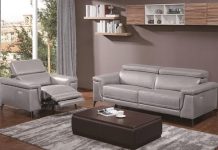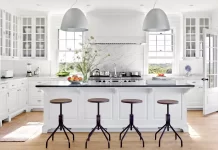Working from home can be a double-edged sword: on the one hand, you spend less time commuting. On the other hand, you may end up working longer hours because of all the distractions at home, especially if you’re working in a poorly designed home office.
In this blog, we’ll share some of the most common home office design mistakes to avoid. We’ll also answer some of the most frequently asked questions on the topic. By the end, you’ll know how to design a productivity-boosting workspace you’ll love for years.
Let’s dive in!
Table of Contents
1. Picking the wrong location
Carving out enough space for a home office is the most important step. You wouldn’t want to be sitting at a place where someone can swoop in and chat. If you have small children, it might be difficult to avert your eyes while they’re running around.
It’s important to create a designated adult-only work area. It shouldn’t be too close to your bedroom that you’ll feel compelled to take a nap every now and then. It should also have adequate lighting – natural and artificial – so that you feel comfortable working day or night.
A building designer may help you find the best place for a home office. You can consider converting your attic into a loft office or renovating your basement. Some people even get creative and turn the space under their stairs or their closets into an office.
2. Not adding enough built-in storage
If you have the type of job that requires you to handle plenty of paperwork, you’ll need enough filing cabinets to keep your space clutter-free. Any workspace that’s bursting at the seams with thousands of documents won’t feel motivating. There’s also a chance that you might lose important files.
3. Prioritising aesthetics over ergonomics
When designing your home office, you should prioritise ergonomics and functionality. Not following correct office ergonomics can result in back and neck pain or even carpal tunnel syndrome, a musculoskeletal disorder.
Pick a desk that allows your monitor to be at eye level. It should be an arm’s length away from your body to prevent computer vision syndrome.
Your chair should also be able to help you keep your back straight so that your bones and joints stay aligned. Pick a chair with a large and comfortable backrest.
4. Not enough power outlets
One of the most common issues when designing a home office is not having enough power outlets. This is especially true for rooms intended for other purposes, such as a guest room. This is where draftsman becomes really helpful in providing the layout that you can use as a guide
Still, you don’t have to rewire your home to have enough outlets to power up your home office. You can consider installing a power strip or multi-outlet adapters.
Just be careful not to overload your outlet. Check how many watts your outlets can handle and see if it’s enough for your home office.
6. No adequate ventilation
No matter how beautiful your home office is, it won’t be a comfortable place to work in if it doesn’t have adequate ventilation. If you’re staying in an attic, consider adding windows or a skylight. If you’re in the basement, build an egress and add an exhaust fan. Add large mirrors to reflect light all over the space.
You should also consider adding an air conditioning unit so that the temperature stays comfortable all day long. Aim for an office space that stays at 23 to 26 degrees Celsius (73 to 79 degrees Fahrenheit) all day.
Frequently asked questions
Does a home office need to have a door?
Ideally, a home office should be completely separate from a house’s living space. To achieve that goal, create a room with a door so that you won’t have to worry about other people barging in when you’re in the middle of an online meeting or writing an important report.
In some cases, maintaining a separate home office may also entitle you to some tax refunds.
How far should a desk be from a wall?
A desk should be at least 59 centimetres (23 inches) away from the wall to give you enough clearance for a chair. If your desk is against the wall, leave 7 to 15 centimetres (3-6 inches) so that you still have room for outlets at the back.
What direction should my desk face?
Some people prefer to have their desks face a window so that they can admire the view during short mental breaks. If that proves to be too distracting, place the desk perpendicular to the window so you can still enjoy plenty of natural light. In case your home office does not have a window, place it in the middle of a room, facing the door or entryway.
Start designing a productive home office today
Working from home is convenient, but only when you have a well-designed home office. If you force yourself to work in an uncomfortable place, you can end up hurting yourself and your productivity. Make careful choices with regard to your home office’s layout, furniture, and decor, and you’ll have a delightful place you’ll love to work in every day.



















